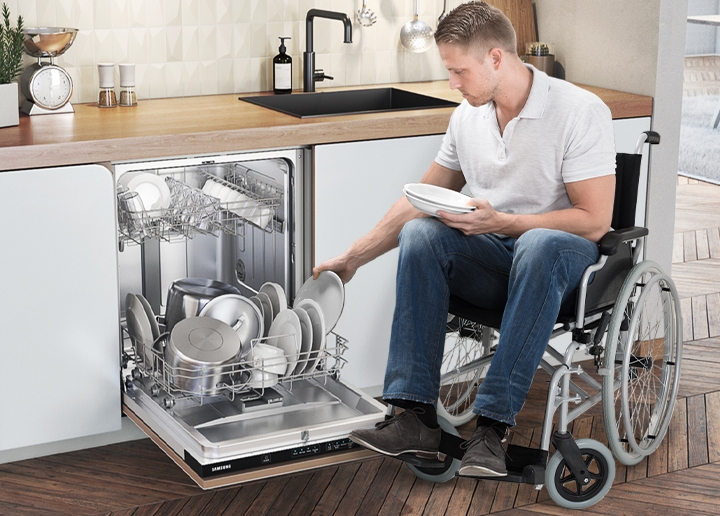In today’s rapidly advancing world, technology has become an integral part of our daily lives. One of the most significant advancements in recent years is home automation. Not only does it bring convenience, but it also offers incredible benefits for those seeking accessibility in their homes. By integrating home automation for accessibility, individuals can experience a better quality of life, especially those with disabilities or the elderly. This article delves into the various aspects of home automation for accessibility, exploring its advantages, applications, and how it can transform everyday living.

Understanding Home Automation
Home automation refers to the use of technology to control and manage household systems and devices. This includes lighting, heating, security, and even appliances. With the aid of smart home technology, these systems can be automated and controlled remotely, offering unparalleled convenience and efficiency.
Why Accessibility Matters
Accessibility is crucial for individuals with disabilities or those who face mobility challenges. It ensures that everyone can navigate and utilize their living spaces comfortably and independently. By incorporating home automation, we can create an environment that caters to the needs of these individuals, promoting independence and enhancing their quality of life.
Benefits of Home Automation for Accessibility
- Increased Independence: Allows individuals to control their environment without assistance.
- Enhanced Safety: Offers features like automated lighting and security systems that reduce the risk of accidents.
- Convenience: Simplifies daily tasks through voice commands or remote control.
Applications of Home Automation in Accessibility
Smart Lighting
Smart lighting systems can be programmed or controlled via voice commands to adjust brightness or switch on and off at specific times, ensuring that individuals with visual impairments or mobility issues can navigate their homes safely.
Automated Doors
Doors equipped with automated systems allow easy access, especially for those using wheelchairs or walkers. These systems can be controlled via a smartphone or a remote control device.
Voice-Controlled Devices
With the rise of voice-activated assistants like Amazon Alexa or Google Assistant, individuals can perform a multitude of tasks without physically interacting with devices. This is particularly beneficial for those with limited mobility.
Smart Thermostats
Smart thermostats allow users to control the temperature of their homes through an app or voice commands, ensuring comfort without the need to manually adjust settings.
Implementing Home Automation for Accessibility
Assessing Individual Needs
Before implementing home automation solutions, it’s essential to assess the specific needs of the individual. This ensures that the chosen technology effectively addresses their unique requirements.
Choosing the Right Technology
With a plethora of options available, selecting the right technology can be daunting. It’s essential to choose systems that are user-friendly and compatible with existing devices.
Installation and Setup
Proper installation and setup are crucial for the effective functioning of home automation systems. It’s advisable to seek professional assistance to ensure that everything is set up correctly.
Overcoming Challenges in Home Automation
Cost Considerations
While home automation offers numerous benefits, the initial cost can be a barrier for many. However, it’s essential to view this as a long-term investment, considering the potential savings and enhanced quality of life.
Technology Compatibility
Ensuring that all devices and systems are compatible is crucial for seamless integration. This requires thorough research and sometimes professional guidance.
The Future of Home Automation in Accessibility
The future of home automation looks promising, especially with continuous advancements in technology. As more innovations emerge, the potential to enhance accessibility and improve the quality of life for many individuals will only grow.
Conclusion
Home automation for accessibility is not just a trend but a transformative approach to improving the lives of many. By leveraging technology, individuals can experience increased independence, safety, and convenience in their homes. As we continue to embrace these innovations, the possibilities for creating inclusive and accessible living spaces are endless.

FAQs
What is home automation for accessibility?
Home automation for accessibility involves using technology to create a more accessible and convenient living environment for individuals with disabilities or mobility challenges.
How does smart lighting help with accessibility?
Smart lighting allows individuals to control lighting through voice commands or automation, ensuring that homes remain well-lit and safe for those with visual impairments or mobility issues.
What are the cost implications of implementing home automation?
While the initial cost can be high, viewing it as a long-term investment is essential. Over time, the benefits and potential savings make it a worthwhile investment.
For more information on creating accessible homes, you can visit ADA Requirements for Homes.
Explore insights on Assisted Living vs. Modifications and learn how Home Care Compares to Modifications to make informed decisions about home automation for accessibility.
This article contains affiliate links. We may earn a commission at no extra cost to you.

